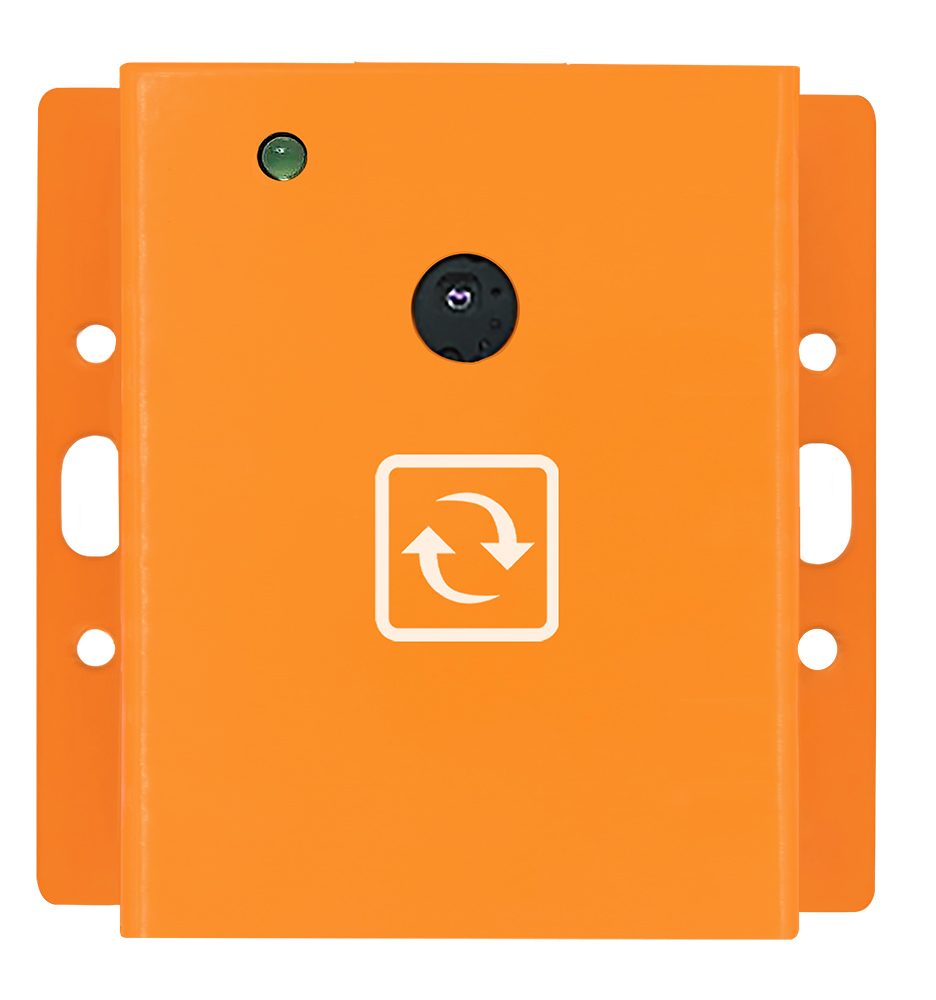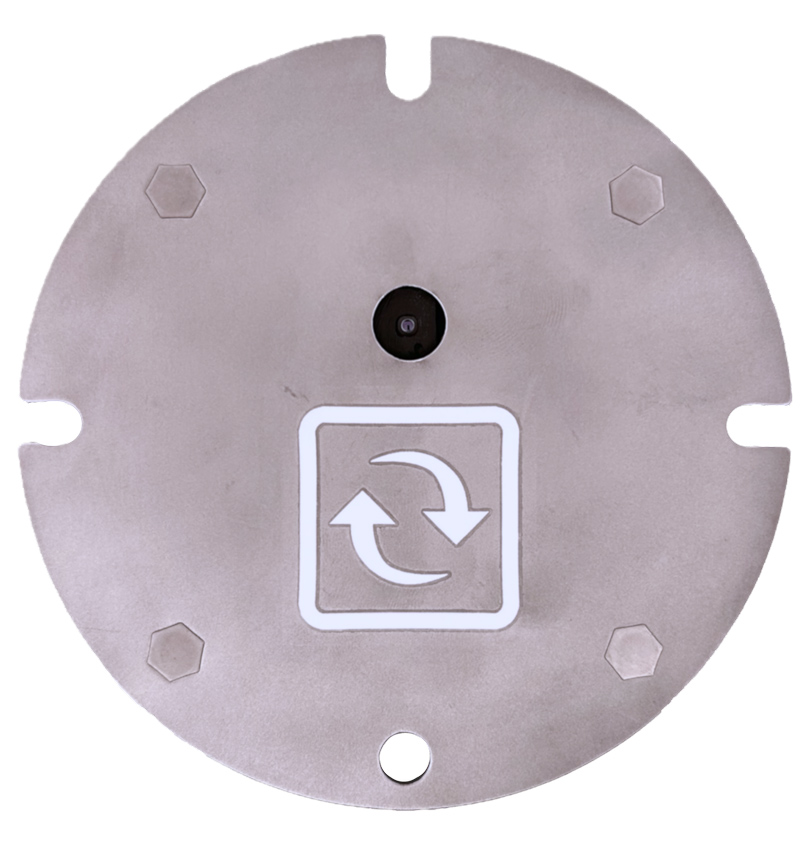Infrared Thermography Sensorsfor detecting thermal anomalies & runaways
for detecting thermal anomalies & runaways


* requires the base unit for the industrial IP protocols (BASE-SM-5-24V, BASE-PI-5-24V, BASE-SM-6, BASE-PI-6)

A picture is worth a thousand words

A traditional temperature sensor tells you what it feels. However a Thermography sensor tells you the temperature of anything it sees; up to a distance of 50 yards or 45m.
One image can contain 192 temperature measurement points (Extra-Small version) , 768 (Small), 4800 (Medium) or 19200 points for the Large version.
The thermography is refreshed every 2 seconds. Minimum and maximum temperature data is available to industrial and IT automation platforms via Modbus TCP, RTU (RS485) or SNMP.
One image can contain 192 temperature measurement points (Extra-Small version) , 768 (Small), 4800 (Medium) or 19200 points for the Large version.
The thermography is refreshed every 2 seconds. Minimum and maximum temperature data is available to industrial and IT automation platforms via Modbus TCP, RTU (RS485) or SNMP.

Switchgear & electrical panels monitoring
Traditionally switchgear is monitored using contact based temperature sensors. They report the temperature at the point where the sensor is mounted. Switchgear also needs to be periodically checked using thermal camera guns. One hopes to catch an issue when it just appears and that it doesn't show up just after a periodic scan.
With our patented thermography sensors a user can monitor switchgear and electrical panels 24x7 in an automated way. No need for individual temperature sensors.
With our patented thermography sensors a user can monitor switchgear and electrical panels 24x7 in an automated way. No need for individual temperature sensors.


Logical thermal sensors using zones
identifying each bus bar or feeder cable

The thermography from the sensor can be divided into 4 different logical temperature sensors. This enables to report via Modbus TCP each bus bar, feeder cable or other equipment part as a discrete temperature sensor.
For the Medium & Large versions, the sensor will report the MIN and MAX values in each zone. For the Small and Extra-Small versions, the sensor will report the MAX temperature value in each zone as a different sensor.
For the Medium & Large versions, the sensor will report the MIN and MAX values in each zone. For the Small and Extra-Small versions, the sensor will report the MAX temperature value in each zone as a different sensor.

Detect thermal unbalance
between the different phases
Thermography, or the use of our Thermography sensors, can be used to detect phase unbalance in switchgear by detecting temperature differences between the phases.
In
a three-phase electrical system, the current flowing through each phase should be balanced, with equal amounts of current flowing through each phase. If there is a phase unbalance, it can cause one phase to carry more current than the others, leading to overheating and potentially damaging the switchgear.
A Thermography sensor can detect temperature differences on the surface of the switchgear, automatically identify hot spots that could indicate a phase unbalance. By comparing the temperature of each phase, the sensor will generate a thermal imbalance sensor which computes the temperature difference.
Overall, thermography is a useful tool for detecting phase unbalance in switchgear, as it allows maintenance staff to identify the problem early and take corrective action before it causes significant damage. With our sensors, staff can monitor it 24x7, automatically.
a three-phase electrical system, the current flowing through each phase should be balanced, with equal amounts of current flowing through each phase. If there is a phase unbalance, it can cause one phase to carry more current than the others, leading to overheating and potentially damaging the switchgear.
A Thermography sensor can detect temperature differences on the surface of the switchgear, automatically identify hot spots that could indicate a phase unbalance. By comparing the temperature of each phase, the sensor will generate a thermal imbalance sensor which computes the temperature difference.
Overall, thermography is a useful tool for detecting phase unbalance in switchgear, as it allows maintenance staff to identify the problem early and take corrective action before it causes significant damage. With our sensors, staff can monitor it 24x7, automatically.


Automate IR windows monitoring
Currently IR windows are monitored through periodic manual inspections using thermal guns.
By using our infrared thermography sensors, you can not only automate the monitoring process but also perform it non-stop 24x7. The IR window mount kit enables you to plug a thermography sensor on common 2", 3" or 4" thermal windows.
Not only do you monitor constantly your equipment, by no longer needing manual inspections you reduce your total cost of ownership.
Learn more
By using our infrared thermography sensors, you can not only automate the monitoring process but also perform it non-stop 24x7. The IR window mount kit enables you to plug a thermography sensor on common 2", 3" or 4" thermal windows.
Not only do you monitor constantly your equipment, by no longer needing manual inspections you reduce your total cost of ownership.
Learn more

Benefits of thermography sensors
in thermographic inspections
Thermographic inspections are a useful tool for identifying potential problems with switchgear equipment. Overheating is a common issue in switchgear and can be caused by a variety of factors, such as loose connections, overloaded circuits, or malfunctioning components. If left unchecked, overheating can lead to equipment failure or even a fire.
InfraSensing's Thermography sensors can detect temperature differences on the surface of the switchgear, allowing maintenance staff to identify hot spots that could indicate a problem. This can help identify issues before they become serious problems, allowing maintenance staff to take corrective action and prevent equipment failure.
Rather than relying on periodic inspections, with Thermography sensors issues can be detected 24x7.
In addition to identifying overheating issues, thermographic inspections can also help to identify other problems with switchgear, such as faulty insulation or damaged components. Overall, thermographic inspections are a valuable tool for maintaining the safety and reliability of switchgear equipment.
InfraSensing's Thermography sensors can detect temperature differences on the surface of the switchgear, allowing maintenance staff to identify hot spots that could indicate a problem. This can help identify issues before they become serious problems, allowing maintenance staff to take corrective action and prevent equipment failure.
Rather than relying on periodic inspections, with Thermography sensors issues can be detected 24x7.
In addition to identifying overheating issues, thermographic inspections can also help to identify other problems with switchgear, such as faulty insulation or damaged components. Overall, thermographic inspections are a valuable tool for maintaining the safety and reliability of switchgear equipment.






